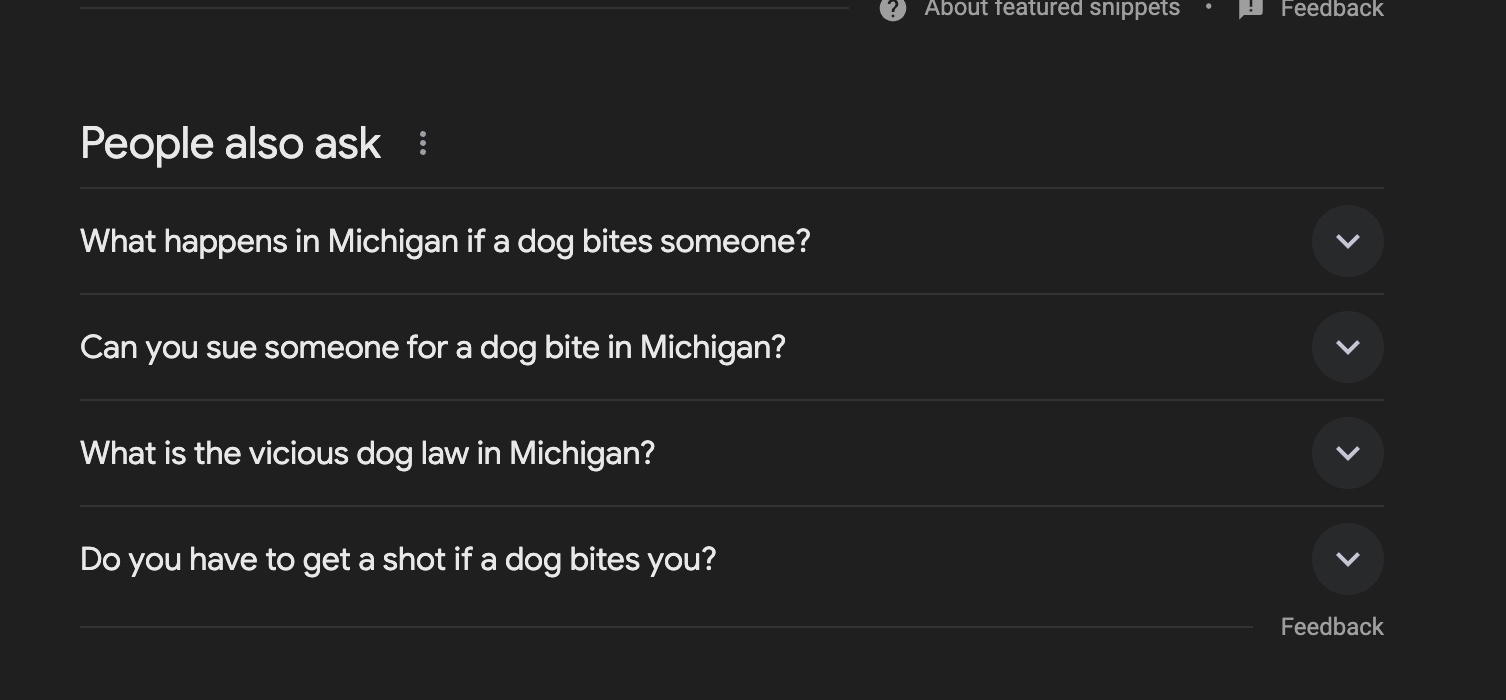
May 5, 2024
Law firm content that brings results requires a great content strategy.
And a superb, action-driving legal content strategy requires detailed content outlines and briefs for each and every page on your law firm website.
Writing high-quality content briefs and outlines helps ensure your content will: drive conversions, elevate your firm’s online presence, and attract the new clients you want.
It’s not enough to decide on a legal topic, hand it off to a legal writer, and expect to get exactly what you’re looking for in return.
To get a piece of content that achieves real strategy goals, you have to have a hyper-detailed content process. And that involves writing hyper-detailed content briefs and outlines.
Not sure how to do it? The experts at Excelsior Content have compiled this information below.
Legal Content Outline vs. Content Brief
First, you may be wondering: what’s the difference between a legal content brief and an outline?
Here’s what to know about these two types of content writing elements:
- A legal content brief outlines the requirements and aims of the piece in relation to your law firm’s marketing strategy
- A content outline includes headers, subheadings, and supporting information for the final draft of the individual piece
Put another way, a brief includes everything you may need to know about the law firm and their aims for the content. An outline includes the format and all other instructions you need to write the page or blog post.
When working with a legal content writing services partner, you can provide a brief for them to create an outline.
Alternatively, you can create the outline yourself and provide it as a part of the brief.
Steps to Creating a Legal Blog Post/Web Page Brief
The first step in any form of written content creation is to create the brief. That’s because the brief will inform the way writers write the page.
Here’s a step-by-step process for creating a content brief for legal blog writing, web page writing, and other types of law firm website content.
1. Begin with Keyword Research
First, use a tool like Ahrefs to research keywords for your legal content brief. Keyword research helps you understand what related topics people may want to see when searching for a particular topic. This, in turn, helps inform what to include in the brief.
For example, suppose you are a personal injury lawyer who helps dog bite victims.
When writing a brief for a blog post about dog bite laws, Ahrefs may tell you that people searching for information about laws on dog bites most often search for laws specific to their state.
Accordingly, you may want to include a section that covers these laws for each state, or for the state(s) where your law practice is located.
Keyword research is important as it lends to your site’s search engine optimization (SEO), so every outline needs in-depth keyword research.
2. Complete Initial Topic Research
Many content marketers just focus on the keywords. However, it’s not enough to just cover the topic of the audience.
To attract and retain the leads you deserve, you must engage in detailed keyword and topic research to get a clear understanding of the factual information related to your topic.
Be sure to include relevant information you find, such as key statistics, facts, and groundbreaking research.
Such information changes frequently, so you (and your content marketing team) have to be at the top of your digital marketing game at all times.
3. Move to Competitor Analysis
You can’t know how your content will stack up compared to others in the legal industry unless you know what it’s up against.
However, competitor analysis must be taken with a grain of salt. Some sites rank for reasons far beyond content, like great backlinking.
Yet, most top-ranking sites are in the top SERPs for a reason. They are likely user-focused and well-researched.
So, you should use top-ranked legal professional competitors as guides.
Ask yourself the following as you go through high-ranking pages:
- What are they covering in relation to my topic?
- What subtopics do they cover?
- How do they stay user-focused throughout the content?
- What factual information do they include?
- What core content needs do they miss?
- What questions did you have that went unanswered?
4. Scour Forums, PAA Questions, and Keyword Tools
You can get a lot from research and keyword tools and competitor analysis.
But forums like Reddit’s legal subreddits and people also ask (PAA) questions on Google can tell you what prospective users are actually looking for and want to know about in relation to the topic.
Once you find out what people are looking for, you can turn these topics into subheads (H2s, H3s, etc.) or frequently asked questions. You can then answer them well to ensure your content is user-focused.

5. Select a Descriptive, Relevant Page Title
Your blog post or web page title will vary depending on the content brief’s topic, purpose, the focus keyword you’re targeting, and user analysis.
For example, suppose you’re writing a brief for this page. Although the focus keyword of this page is “legal content outlines and briefs,” that alone would not make an attention-grabbing title.
On the other hand, “Writing Legal Content Outlines & Briefs for Law Firm Websites” is specific and incredibly focused. It speaks to an issue law firms and lawyers have probably faced and lets the potential user know exactly what the page will cover.
Consider the following when naming your law firm web pages:
- Your keyword focus
- Audience needs
- Competitor analysis — while you can’t copy from competitors, you should learn about potential customer queries from your top competitors
- Project breadth and depth
6. Identify the Internal Links to Include
An internal link is any link from your law firm’s web page to another page on site.
There are several types of internal links, including links to your blog post feed, menu, and homepage, and contextual links (links within your content, such as links to pertinent blog posts).
Some legal content marketers may believe that including as many internal links as possible to their client’s site drives views.
However, quantity isn’t enough. Marketers must also ensure that the links actually provide further insight into the main topic and subtopics to enhance the user’s experience.
7. Find Credible Sources (External Links)
After adding internal sources, you should start finding credible external or outside sources.
For your content to be considered authoritative, it must be supported by experts and industry research, such as case studies.
Follow a stringent policy of solely using credible external sources in your content and to support all facts, particularly legal ones, with reliable sources.
Credible sources for legal content include:
- Government legislation sites, such as The New York State Senate and the Florida Senate
- State bar associations, such as the Pennsylvania Bar Association
- Cornell Law School’s Legal Information Institute (LII), which publishes free features and materials that help people understand law, such as blog posts and a legal dictionary and encyclopedia
- Scholarly articles published by universities or journals about interpreting law, such as the University of Florida (UF) Law Scholarship Repository
- State law libraries, such as the Texas State Law Library
8. Determine the Scope of the Project
Next, determine the scope of your project by thinking about the target audience’s customer journey phase.
The customer journey is a series of actions that customers take before and after making a purchase. Think of it as a detailed map showing every interaction customers have with your brand.
There are five customer journey phases:
- Awareness is how someone discovers your law firm, typically through a search engine, social media, or word of mouth. At this stage, leads know little about your firm, so you should share educational information about your services. Think eBooks, podcasts, and blog posts about your practice area. Your aim is to capture leads’ interest by showing that your legal practice understands their needs and provides the best solutions.
- Acquisition or consideration is when prospective clients create a list of potential firms. To stand out from competitors, you must show why you are the best option for your customers through case results, testimonials, and frequently asked questions (which can be separate pages or part of blog posts).
- Purchasing is when clients decide to hire you. Most law firms offer free consultations to help potential clients make decisions. You can market these services by putting them on short landing pages containing calls to action (CTAs). Also known as a single property page and lead capture page, a landing page is a standalone web page created specifically for advertising or marketing. Visitors land on landing pages after clicking an ad from email, Instagram, Google, and other places. Unlike web pages, which encourage exploration and have multiple goals, landing pages are solely designed to host CTAs.
- Engagement or retention requires law firms and marketers to keep customers returning to your firm. You can do this by peppering your copy with surveys and follow-up calls after the client signs the contract to retain you.
- Advocacy requires getting happy customers to advocate the value that your legal services bring to their lives. It’s the most difficult part of the customer journey because only truly satisfied customers want to voice their satisfaction through testimonials. Excellent customer support, loyalty programs, and referral programs (to other lawyers if they need additional help) can help you get the testimonials you deserve.
9. Decide on a Word Count Target
The word count target varies depending on the customer journey phase a prospective lead is in.
Users in the awareness stage require longer informational content (think guides and eBooks), while those in the purchasing phase typically require shorter landing pages.
Remember: word count or content length is not as important as covering the topic in full. Keep the content concise enough that you don’t lose your audience.
While not a hard-and-fast rule, here are some average word count targets Excelsior Content has discovered after eight years in content marketing:
- Blog posts: 1000-1500 words or less
- Web pages: 1200 to 2500 words, depending on scope of topic
- Guides: 2500-4000 words
- Web copy and landing pages: 200-500 words
10. Write Your Legal Content Brief
Finally, tell your marketing team about the above elements. They can use these tips to create content briefs and outlines.
For more guidance on writing an SEO-friendly and well-researched legal content brief, contact Excelsior Content. Our content team of experienced writers will help you create legal content for every phase of the customer journey.
How to Write a Legal Content Web Page Outline
Your legal content marketing strategy will only be successful if you can keep on-target with your production goals. And writing a highly detailed brief and informative outline for each page ensures you smash those goals every single month.
Once you have written a legal content brief, you can use it as a base starting point for each piece of content, adjusting it as needed for each new piece.
For example, you’ll need new keyword research each time and brand-new research. However, you probably won’t need to identify the project scope when dealing with new types of content that are similar to projects your blog writers have already covered.
At this point, you’re ready to write a highly detailed content outline.
Here’s what to do.
Format the Outline Using the Inverted Pyramid Style
Write the page or blog content outline using the inverted pyramid style (picture an upside-down pyramid).
Put the most important topics in relation to your focus topic at the top of your page and filter downward.
For instance, if you’re writing a page on your law firm, you should start with a question that many people have: why should they hire your law firm? How will the benefit of hiring this law firm outweigh the cost?
The second section could be about cost since that’s people’s primary concern. You can then get into the specific ways your law firm can help people, which could lead to the legal options that are available to people if you work with them.
Note: all headings and subheads on the page should be directly related to your main topic.
Adjust Headings to Be Hyper Descriptive
The old way of formatting content was with super concise headings. Using this approach, the headings on this page would look like “Legal Content Briefs” and “Legal Content Outlines.”
While these are efficient, they are very broad.
Instead, you should draw in the reader by telling them exactly what they’ll find in each section. For example, “How to Write a Legal Content Brief” versus “Legal Content Briefs” and “How to Write a Legal Content Outline” versus “Legal Content Outlines.”
With a bare-bones legal content brief, you should be able to scan all the section headings and know what the page will be about/have an idea of its outcome or how to do whatever it’s teaching you.
Add Subheads for Digestibility
Research shows again and again that people scan content. Accordingly, you should make your content easier for them to digest. Add subheads to large sections to break down concepts and legal issues.
This is especially important for legal content writers because a legal audience can quickly become daunted and overwhelmed by legal jargon.
To avoid legalese, ask the receptionist or a content marketing team to look over your legal content brief. They can tell you whether your subheads are understandable.
Write Instructions for the Legal Writer for Each Section
Finally, you must add instructions for the legal writer for each section.
Legal writers only succeed when they have clear instructions for what the content should cover and why it is important to the overall topic.
Every section should clearly connect to your main topic. If it’s unclear how a section connects to the main topic, your instructions likely aren’t clear enough.
If your legal writers are creating the brief, instruct them to write notes on the document so they can remember what they want to cover for each section.
Customize Each Legal Content Outline
What to include for each outline outside of the basic requirements depends on each project.
For example, you may want to include:
- Competitor page examples: with strict instructions to use as inspiration. The writer should not copy the pages, but use them to understand what the page should be about.
- Previous content examples: if your law firm has covered similar topics before, include these as a baseline for your writer to follow. For example, pages on your various areas of law practice will be similar.
- Links to good resources: the more initial research you provide the legal content writer, the faster and easier they may be able to turn around the content.
- Special instructions: while you should give careful instructions for what to write in each section of the outline, you may have additional instructions regarding voice, scope, purpose, etc.
- Website target: if you own multiple websites, it helps to include within the page outline the specific website where this page will be posted.
- Any link requirements: not all legal writers understand how to include backlinks within their content. But for those that do, including instructions for which pages to link to and the anchor text to include can ease this process for you during editing.
- Link to Clearscope report: if you use a keyword tool, like Clearscope, for optimization, it’s helpful to include the link to the individual report directly in the outline.
Does Legal Blog Content Need an Outline or Brief?
While your law firm can indeed hire blog writers or SEO writers to enhance their marketing efforts and hand off the job of content writing… you may not see much success if you give them no information.
Any marketing agency your firm hires will likely ask:
- Your firm’s purpose with content marketing (i.e. raising law firm brand awareness, attracting new clients, increasing online presence etc)
- Your target client personas
- What values are important to your law firm
And each of these elements will be included in a high-quality content brief and outline.
If you try to publish content on your legal website without these elements embedded in your strategy, you probably won’t get the results you want.
Don’t take the risk — do the work ahead of time to guarantee that each and every page you publish on your site is geared toward achieving your target goals.
Save Time on Legal Content Outline Writing
If the legal content outline and brief compiling process sounds like a headache — never fear. There are teams of legal content strategy experts ready and willing to help you.
Excelsior Content has a team of legal content and copywriters ready to help you slay your content production goals. And with our combined decades of content experience, and streamlined content production process, we know you won’t be disappointed.
Reach out to us today for a free initial consultation to get started.
Sources
CallRail. “The 2023 Marketing Outlook for Law Firms.” Retrieved May 5, 2024 from https://www.callrail.com/learn/2023-marketing-outlook-for-law-firms-report.
Content Marketing Institute (2023). “B2B Content Marketing: Benchmarks, budgets, and trends.” Retrieved May 5, 2024 from https://contentmarketinginstitute.com/wp-content/uploads/2022/10/b2b-2023-research-final.pdf.
Nielsen Norman Group. “F-Shaped Pattern of Reading on the Web: Misunderstood, But Still Relevant (Even on Mobile). Retrieved May 5, 2024from https://www.nngroup.com/articles/f-shaped-pattern-reading-web-content/. Nielsen Norman Group. “How Users Read on the Web.” Retrieved May 5, 2024 from https://www.nngroup.com/articles/how-users-read-on-the-web/
